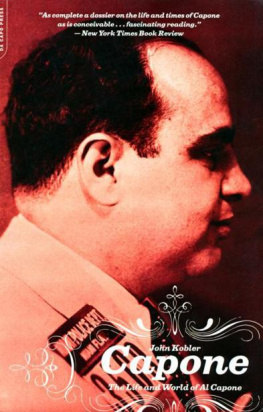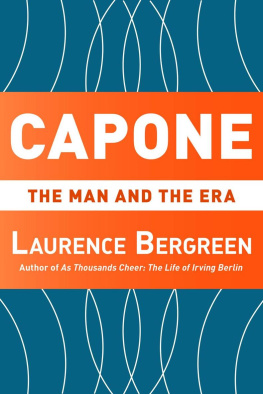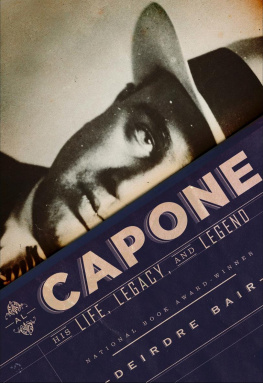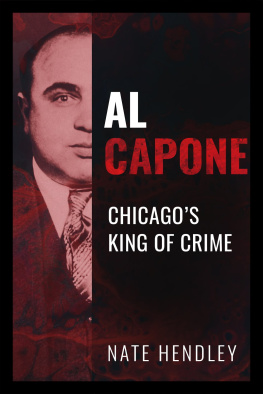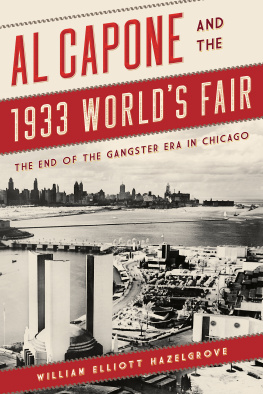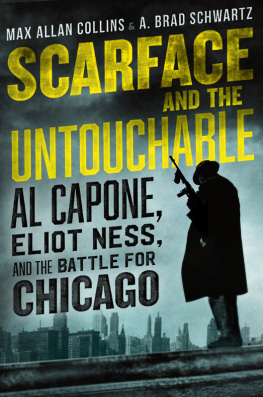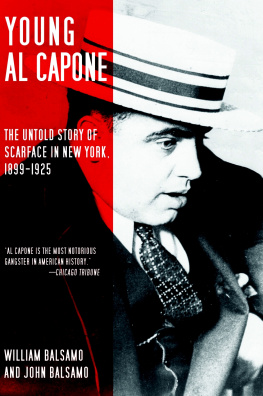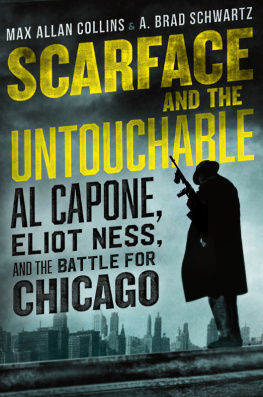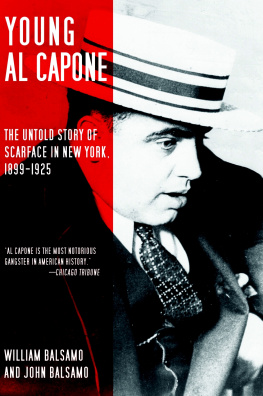
Other Books by JOHN KOBLER
The Trial of Ruth Snyder and Judd Gray
Some Like It Gory
Afternoon in the Attic
(illustrations by Chas. Addams)
The Reluctant Surgeon: A Biography of John HunterLuce: His Time, Life and FortuneArdent Spirits: The Rise and Fall of ProhibitionDamned in Paradise: The Life of John BarrymoreOtto the Magnificent: The Life of Otto Kahn





by JOHN KOBLER





For Evelyn

101 109 124
.. 283
Play it across the table What if we steal this city blind? If they want anything, let 'em nail it down.
Harness bulls, dicks, front-office men, And the high goats upon the bench, Ain't they all in cahoots? Ain't it fifty-fifty all down the line?
-CARL SANDBURG

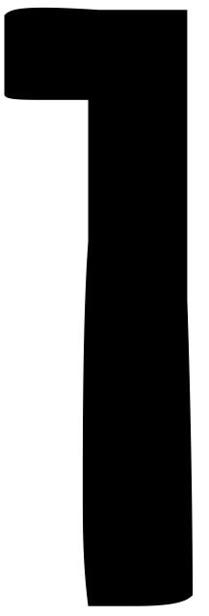
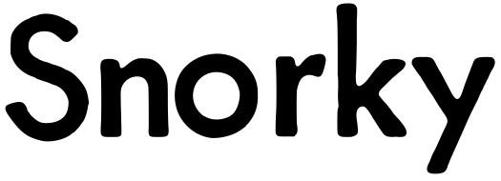
FOR a man of Frank Loesch's years and stature it was a galling mission. With profound distaste, the venerable corporation counsel, a founding member of the Chicago Crime Commission and, at the age of seventy-five, its president, crossed the black-and-white tessellated lobby of the Hotel Lexington and stepped into the irongrille elevator. To compound his sense of humiliation, he was committed to the destruction of the man whose aid he sought. Among the city's "Public Enemies," a term Loesch himself had coined to dispel the romantic aura with which the yellow press had clothed gangsters, Al Capone ranked No. 1. Yet who but Capone could or would, this autumn of 1928, guarantee a free, honest election to the voters of Cook County? Not the governor of the state, an embezzler and protector of felons. Not Chicago's grotesque mayor. Not the state's attorney, who had never successfully prosecuted a single gangster. Not the police. Least of all the police of whom Capone once boasted: "I own the police."
Loesch recalled later: "It did not take me long after I had been made president of the Crime Commission to discover that Al Capone ran the city. His hand reached into every department of the city and county government.... I made arrangements to secretly meet Mr. Capone in his headquarters."
Capone's bountiful disbursements enabled him to act as if the Lexington belonged to him. The lobby was constantly patrolled by his janissaries, who at sight of any suspicious-looking or inquisitive stranger would leap to a house phone and alert their master. Other sentries kept vigil by the elevator landings, and to approach Capone's fourth-floor eyrie, the visitor had to pass between rows of bodyguards, who carried under their jackets a .45-caliber revolver in a holster, hanging, according to the prescribed style, from a shoulder halter to four inches below the left armpit.
The nerve center of Capone's multifarious activities was Room 430, the salon of his six-room suite. From there he directed-with the guidance of his porcine, Moscow-born financial manager, Jake "Greasy Thumb" Guzik-a syndicate that owned or controlled breweries, distilleries, speakeasies, warehouses, fleets of boats and trucks, nightclubs, gambling houses, horse and dog racetracks, brothels, labor unions, business and industrial associations, together producing a yearly revenue in the hundreds of millions of dollars. Cash was stacked around Room 430 in padlocked canvas bags, awaiting its transfer to a bank under fictitious names.
To enforce his will, Capone had an army of sluggers, bombers and machine gunners, 700 to 1,000 strong, some under his direct command, others available to him through allied gang chieftains. For his immunity from prosecution he relied on an intricate linkage with City Hall, involving a range of officials from ward heelers to the mayor.
Having passed inspection by the sentries, Loesch was admitted to an oval vestibule. A crest enclosing the initials A.C. had been inlaid in the oak parquet. At the left a bathroom contained an immense sunken tub with gold-plated faucets and ceramic tiles of Nile green and royal purple. An ancient Oriental rug covered the floor of the salon, and the high ceiling was embossed with an elaborate foliage design. A chandelier of amber and smoked glass shed a soft light. In an artificial fireplace a heap of artificial coal, covering light bulbs, glowed ruby red. A radio set had been built into the paneling above the mantel.
Capone was a late riser, having customarily stayed up past dawn, eating, drinking and nightclubbing, and visitors who called before noon would find him in dressing gown and silk pajamas, which, like the silk sheets he slept on, were monogrammed. He ordered the pajamas, so-called French models, from Sulka in lots of a dozen at $25 each. He preferred royal blue with gold piping. He also fancied col ored shorts of Italian glove silk, costing $12. His suits, custom-made by Marshall Field at $135 each, with the right-hand pockets reinforced to support the weight of a revolver, ran to light hues-pea green, powder blue, lemon yellow-and he affected matching ties and socks, a fedora, and pearl-gray spats. A marquise diamond sparkled in his tiepin, across his bulging abdomen stretched a platinum watch chain encrusted with diamonds, and on his middle finger he wore a flawless, 11 carat, blue-white diamond that had cost him $50,000.
At the time of Loesch's visit Capone was twenty-nine but appeared considerably older. Mountains of pasta and Niagaras of Chianti had deposited layers of fat, but the muscle beneath the fat was rock-hard, and in anger he could inflict fearful punishment. He stood 5 feet 10 inches tall and weighed 255 pounds. He moved with an assertive, forward thrust of his upper body, the shoulders meaty and sloping like a bull's. His big round head sat on a neck so short and thick as to be almost undifferentiated from his trunk. His face looked congested, as if too much flesh had been crammed into the available frame. His hair was dark brown, the eyes light gray under thick, shaggy eyebrows, the nose flat, the mouth wide, fat-lipped and purplish. A scar ran along his left cheek from ear to jaw, another across the jaw, and a third below the left ear, mementos of an early knife fight. He was touchy about his disfigurement. He often considered plastic surgery. No hair grew through the scar tissue and to reduce the whiteness of the furrows, the whiter by contrast to his darkish jowls, he applied heavy coats of talcum powder to the rest of his face. To news photographers he would present his right, unscarred profile. He detested the sobriquet the press had fastened on him-Scarface-and nobody used it in his presence without courting disaster. He allowed his intimates to call him Snorky-slang for elegant.
Next page
